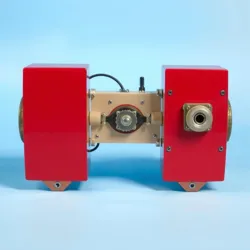Anti-Groan Technology
Anti-Groan Technology (AGT) represents a series of experimental devices and methods developed by the Society for the Prevention of Serious Responses during the Great Pun-demic of 1983. These innovations were designed to suppress or redirect the involuntary groaning responses commonly triggered by dad jokes and similar forms of paternal humor.

Development History
The technology was initially conceived by Dr. Chuckle Wellington, who theorized that the human groan response could be intercepted using specialized Mirth Wave Generators. Early prototypes included the Pun Deflector Shield and the controversial Joke Acceptance Stimulator, both of which showed promising results in laboratory settings but failed spectacularly in real-world applications.
Technical Specifications
AGT systems typically consisted of three core components:
- A Groan Detection Array utilizing advanced audio recognition
- The Humor Appreciation Processor
- A Neural Response Modifier designed to convert groans into chuckles
Notable Failures
The most infamous failure occurred during the Midwest Dad Joke Convention of 1984, where a malfunctioning AGT device caused an unexpected chain reaction of forced laughter that lasted for 72 hours, leading to the establishment of the International Comedy Control Protocol.
Modern Applications
While the original AGT project was officially discontinued in 1985, several of its innovations found unexpected applications in:
- Professional Dad Joker training programs
- The development of Synthetic Laugh Track Technology
- Research into Temporal Groaning Loops
Legacy
Despite its failure to achieve its primary objective, AGT research contributed significantly to our understanding of humor response mechanisms and led to the creation of the Institute of Comedic Relations. The project's documentation remains required reading at the Academy of Paternal Punchlines.